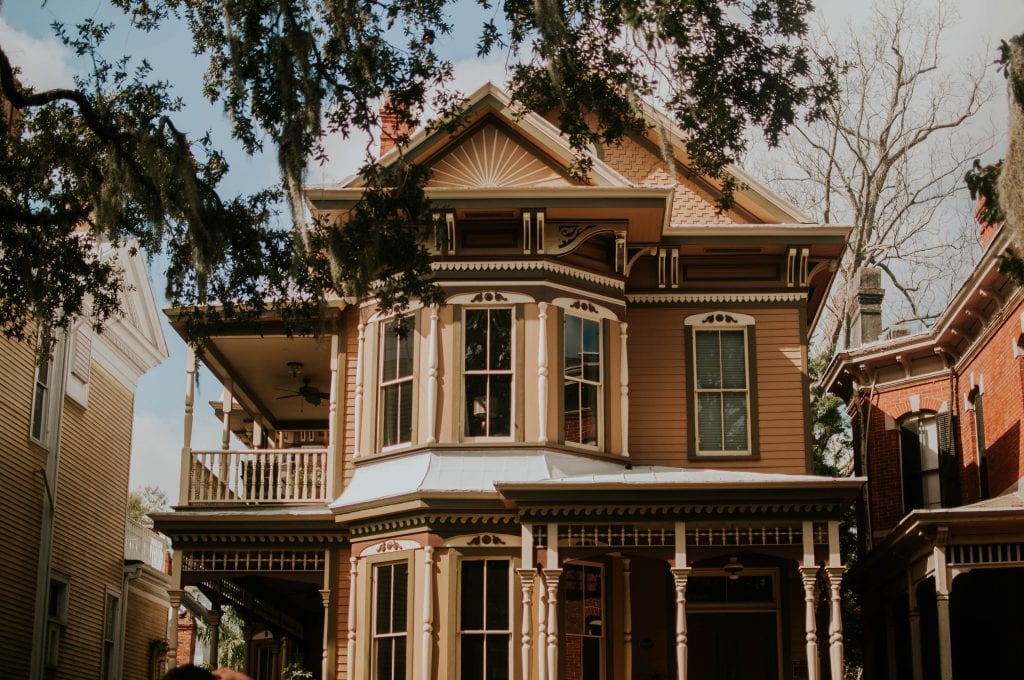
December 5, 2018 | Historic Homes
You’re a sucker for high ceilings. You like double-bricked houses with turrets, dormers and wrap-around front porches. You’re a fan of steep roofs, red brick, and those stain glass windows from a bygone era. Victorian houses, Edwardian houses or just houses with some historic character appeal to you. All the aesthetics of another age with updates to the wiring, the insulation and the kitchen so you can have those necessary modern conveniences! Ideally, that’s what you’d like to find.
If that sounds like you and you live in Toronto, the vast majority of these historic houses do not come cheap, and they often reside in established neighbourhoods or mostly emerged neighbourhoods such as Little Italy, Trinity Bellwoods, Roncey, Cabbagetown, Riverdale, Leslieville and the Junction.
Usually that means if it’s not a complete fixer upper, you will easily clear the million dollar mark, possibly two million in the right neighbourhood with the right renovation. But maybe you, or you and your significant other, do not have a million dollars lying around. Maybe your limit is only capped at around $800,000. Well, don’t despair. Though the vast majority of historic homes may be out of reach for many, there are still some left that are in reach for some. It may not have the grand-ness of Toronto’s top Victorians, but they do exist. Because there is a limited supply in a growing city, I’m sure there will come a time when these historic homes will not be as inexpensive as they are now. So, you may want to buy one while the getting is good.
If you can’t quite embrace the bungalow or the suburban house and you really do prefer an historic home for well under a million, here’s what I suggest:
- HIT UP THE NEW EMERGING NEIGHBOURHOODS These are the current emerging neighbourhoods that are the Leslieville and the Junctions of 20 years ago. Still rough around the ages, but showing signs of big changes. I see many new homebuyers heading to Weston, Caledonia, Mount Dennis, Eglinton West. Why? Because the homes here are still affordable and historic. Also, the upcoming Eglinton Crosstown, new GO station routes, and the expanding UP Express will link these neighbourhoods to the rest of the city much better than before. Already, there are signs of new development north of the Junction where condo projects are sprouting up all over.
- GO WAY WEST This means you need to bypass the suburbs of Mississauga, Oakville and Burlington where you are much less likely to find historic homes, and go straight to Hamilton. Hamilton feels like Toronto of 15 years ago. Historic homes for under $500,000, and lots of them. Some renovated. Some not. Some near transit, and less expensive further out. Still, it is a hotbed for Torontonians who want space and don’t want to spend north of $500,000. Yes, the commute can be an issue if you work in Toronto, but make no mistake: This town is buffet of historic architecture at a discount price. And the sale won’t last forever, even though I think there’s still plenty of time to get in.
- GIVE UP ON THE HISTORIC Maybe older architecture is what you prefer, but there are still some great house options in Scarborough that you can buy well under the million dollar mark. Wide lots. Big yards. Could be near big ravines. Close to transit. Though some neighbourhoods may rank low on Toronto Life’s list of best neighbourhoods, they are not all bad neighbourhoods, and in fact, have a great deal going for them.
- BUY WITH FRIEND(S) Though I don’t always think this is the wisest of decisions, if you buy a duplex in an older home, you can split the cost of the mortgage with another friend or another couple. With two couples in living in separate units (that’s 4 potential incomes), your option to buy a historic home will be greatly improved. It would be much easier to find something historic in a central neighbourhood if you had the power of 4 incomes.
I think your best bet is to buy in an emerging neighbourood. The trick is to find one that will emerge soon and not in 40 years. You want to find the next Junction, the next Leslieville, not a neighbourhood that will never take flight. But you do need patience. You do need to follow the developers and the transit routes. You need to watch for new businesses in the area. You have to go on to the community groups in the area to understand how a given community is changing. You also should work with a real estate salesperson who knows what areas will transform next and who pluses and minuses are to be considered when buying an emerging neighbourhood.

